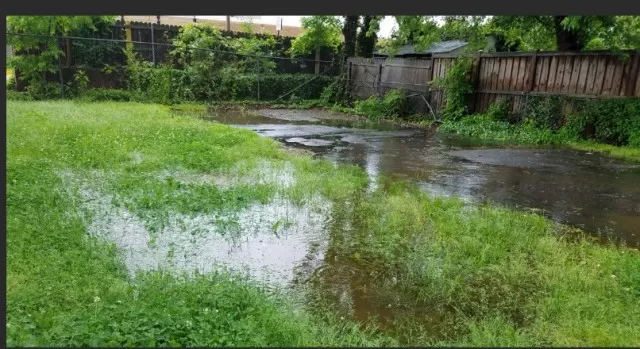8 Yard Factors That Attract Bugs and Pests (Part 1).Encountering bugs around your property is a common occurrence, but when it comes to persistent pests like mosquitoes and flies, you may unwittingly be enticing these critters to your yard. Insects are attracted to specific conditions, and by understanding what’s drawing them in, you can take steps to prevent their unwelcome presence. By addressing these factors and creating an environment that’s less appealing to insects, you can significantly reduce the presence of unwanted bugs in your yard and enjoy a more pest-free outdoor space.
Selecting and Preparing Mango Seeds for Planting: A Step-by-Step Guide

Mango trees, with their delicious fruit and lush foliage, can make a wonderful addition to your garden.
To start your mango tree journey, you’ll need to select and prepare mango seeds for planting. Here’s a step-by-step guide to help you get started:.
**Step 1: Choose Ripe Mangoes**Select ripe mangoes for seed harvesting.
The seeds are only viable for a short time after the fruit ripens, so it’s essential to choose a ripe mango. Look for mangoes that are firm and have a vibrant white color.
Avoid mangoes with shriveled or brown seeds, as these may not produce healthy seedlings. Keep in mind that not every fruit will contain a viable seed, so if the seed looks shriveled or mushy, consider trying again with a different mango.
**Step 2: Remove the Husk**Mango seeds are encased in a stringy-pulpy husk.
To access the seed, you’ll need to remove this husk. Here’s how:- Start by cutting a small hole in the thin edge of the husk, creating an entry point.
– Using a pair of scissors, carefully cut along the edge of the husk, just enough to allow you to pry it open. – Gently pry open the husk to reveal the mango seed inside.
Be cautious not to damage the seed during this process.
**Step 3: Clean the Seed**Once you’ve removed the husk and exposed the mango seed, it’s essential to clean it thoroughly.
Rinse the seed under running water to remove any remaining pulp or residue. Ensure that the seed is entirely clean and free from any clinging pulp.
**Step 4: Dry the Seed**After cleaning, place the mango seed in a well-ventilated area to dry.
This drying process helps prevent fungal growth during germination. Allow the seed to air dry for a few days until it becomes hard and no longer feels damp to the touch.
**Step 5: Store the Seed**If you’re not ready to plant the mango seed immediately, store it in a cool, dry place.
You can place it in a paper bag or a breathable container to prevent mold growth. Ensure that the seed remains dry while in storage.
With your cleaned and dried mango seed, you’re ready to embark on the journey of growing your own mango tree.
Plant the seed in well-draining soil, and provide it with the right conditions, including warmth, sunlight, and regular watering, to encourage healthy germination and growth. In time, you’ll enjoy the satisfaction of nurturing your mango tree from its very beginning.
Planting Mango Seeds: A Simple Guide to Successful Germination
Growing your own mango tree from a seed can be a rewarding experience, whether you plan to cultivate it outdoors or as an indoor houseplant.
Steve Jones, the Horticulture Collections Supervisor for the United States Botanic Garden, offers a straightforward method for planting mango seeds. Here’s how to get started:.
Materials Needed:.
Ripe mango seed.
Wet paper towel.
Small resealable plastic bag.
3- to 4-inch pot.
Well-draining general potting soil.
Sunny spot.
Step 1: Prepare the Mango Seed.
Begin with a ripe mango seed.
Ensure that you’ve cleaned and dried it as mentioned in the previous guide.
Wrap the mango seed in a wet paper towel.
The damp paper towel will provide the necessary moisture to kickstart germination.
Step 2: Enclose in a Plastic Bag.
Place the damp paper towel-wrapped seed inside a small resealable plastic bag.
Zip the bag closed securely to create a sealed, humid environment for the seed.
Step 3: Germination.
Find a warm, dark location to store the sealed bag.
This environment encourages the mango seed to germinate or sprout. Germination times can vary, but it typically takes a few weeks.
Step 4: Prepare the Pot.
Once the mango seed has germinated and you see a sprout emerging, it’s time to prepare a pot for planting.
Choose a 3- to 4-inch pot with well-draining general potting soil.
Ensure the pot has drainage holes to prevent waterlogged soil.
Step 5: Plant the Germinating Seed.
Place the germinating mango seed flat on the soil in the pot.
Cover the seed lightly with additional soil.
The top of the sprout should be just above the soil surface.
Step 6: Provide Optimal Conditions.
Move the pot to a sunny location where it can receive plenty of sunlight.
Mango trees thrive in full sun.
Water the soil thoroughly, but be mindful not to overwater.
Keep the soil consistently moist but not soggy.
With proper care and patience, your mango seedling will develop into a healthy mango tree.
Mango trees are known for their slow growth, so Be Prepared to nurture and provide for your plant over the years. As it matures, you’ll have the opportunity to enjoy the fruit of your labor and savor the sweet rewards of homegrown mangoes.
Creating the Perfect Habitat for Mango Seedlings

To ensure the successful growth and development of your mango seedlings, it’s vital to provide them with the ideal growing conditions.
Mango trees thrive in specific environmental settings, and attention to these factors will contribute to their health and vitality.
Sunlight:
Mango seedlings require ample sunlight to grow vigorously.
If you’re growing them indoors, place them in a south-facing window that receives full light. If you’re cultivating them outdoors, provide filtered sunlight.
However, take note that young mango trees should not be exposed to full sun until they mature. Once fully grown, mango trees benefit from at least six to eight hours of direct sunlight daily.
Soil:
Mango seeds are not overly picky when it comes to soil.
They can adapt to various soil types as long as the soil is well-draining. This means that excess water should not pool around the roots, as mango trees are susceptible to root rot in soggy conditions.
The soil pH can range from acidic to neutral to alkaline, making mangoes versatile in terms of soil preference.
Temperature:
Mango trees thrive in warm, humid climates, as they are tropical plants.
To ensure their well-being, aim for temperatures between 65 and 90 degrees Fahrenheit (18-32 degrees Celsius). Consistent warmth is particularly important during the summer when mango trees produce fruit.
Mangoes are generally hardy in USDA growing zones 9 to 11, where these temperature ranges are typically met.
By paying attention to these essential factors—sunlight, soil, and temperature—you can create the optimal habitat for your mango seedlings to flourish.
With the right care and conditions, you’ll be well on your way to enjoying the beauty and delicious fruit of your mature mango tree in the years to come.
Nurturing Your Mango Seedlings: Essential Care Tips
Caring for mango seedlings is a journey that requires attention to their specific needs as they grow and develop.
Here are key care guidelines to help you ensure the health and vitality of your mango seedlings:.
Watering:
Maintain Even Moisture: Keep the soil around your mango seedlings evenly moist during their early growth stages.
As the seedlings mature and develop a more robust root system, you can reduce the frequency of watering. Water Thoroughly: When you water, ensure that you thoroughly saturate the soil.
Allow the excess water to drain out through the pot’s drainage holes. After watering, empty any excess water from the saucer beneath the pot.
Monitor Soil Moisture: A general rule of thumb is to water your mango seedlings when the top 2 inches of soil become dry. Consistently check the soil’s moisture level to avoid both overwatering and underwatering.
Fertilizing:
Patience Is Key: Hold off on fertilizing your mango seedlings until they have produced multiple sets of leaves and have filled their pots with roots.
This initial period of growth allows them to establish a stable foundation. Choose the Right Fertilizer: When it’s time to fertilize, opt for a well-balanced general fertilizer that contains equal amounts of nitrogen, phosphorus, and potassium, along with essential micronutrients.
This balanced nutrition will support healthy growth and development. As your mango seedlings continue to mature, they will require less frequent watering, and their need for fertilization will increase.
Stay attuned to their growth progress and adjust your care routine accordingly. With proper care, your mango seedlings will thrive and, in time, reward you with the promise of luscious mangoes as they develop into mature fruit-bearing trees.
Addressing Common Problems and Ensuring Pest Prevention for Mango Plants

Mango plants, like all living things, can face challenges in the form of pests and diseases.
Being vigilant and taking prompt action is key to maintaining the health and vitality of your mango plants. Here’s A Guide on how to address common problems and prevent pests and diseases:.
Common Diseases:.
Powdery Mildew:.
Appearance: Powdery mildew manifests as a white, powdery substance on the leaves, resembling baby powder.
Cause: This disease is often triggered by insufficient lighting and poor air circulation.
Solution: At the first sign of powdery mildew, apply neem oil or horticultural oil as directed on the product label.
These treatments can help control the disease.
Fungal Leaf Spot:.
Appearance: Fungal leaf spot presents as dark spots or lesions on the leaves.
Cause: Poor air circulation and wet leaves at night contribute to the development of this fungal disease.
Solution: To combat fungal leaf spot, increase the spacing between houseplants to improve air circulation.
Additionally, water the soil at the base of the plant early in the day rather than overhead to minimize leaf wetness.
Common Pests:.
Mites and Aphids:.
Occurrence: Mites and aphids are more common in hot and dry conditions.
Control: Regularly spray the foliage with strong jets of water to manage mite and aphid populations.
You can also employ insecticidal soap or horticultural oils; however, multiple applications may be necessary.
Mealybugs and Hard Scales:.
Appearance: Mealybugs resemble cottony masses, while hard scales have protective shell-like coverings.
Control: In the early stages of these pests’ development, insecticidal soap or horticultural oil can be effective.
Once they have protective coverings, physically remove them with a toothbrush and dissolve them in rubbing alcohol.
Prevention is key in maintaining the health of your mango plants.
Here are some additional tips:.
Proper Care: Ensure your mango plants receive adequate light and have good air circulation.
Avoid wetting the foliage excessively, especially in the evening.
Regular Inspections: Routinely inspect your mango plants for signs of pests or diseases.
Early detection allows for more effective control.
Consistent Maintenance: Maintain a consistent watering schedule and monitor soil moisture levels to prevent overwatering or underwatering.
By following these guidelines and staying vigilant, you can safeguard your mango plants from common problems and ensure they thrive in a healthy environment.
*The information is for reference only.